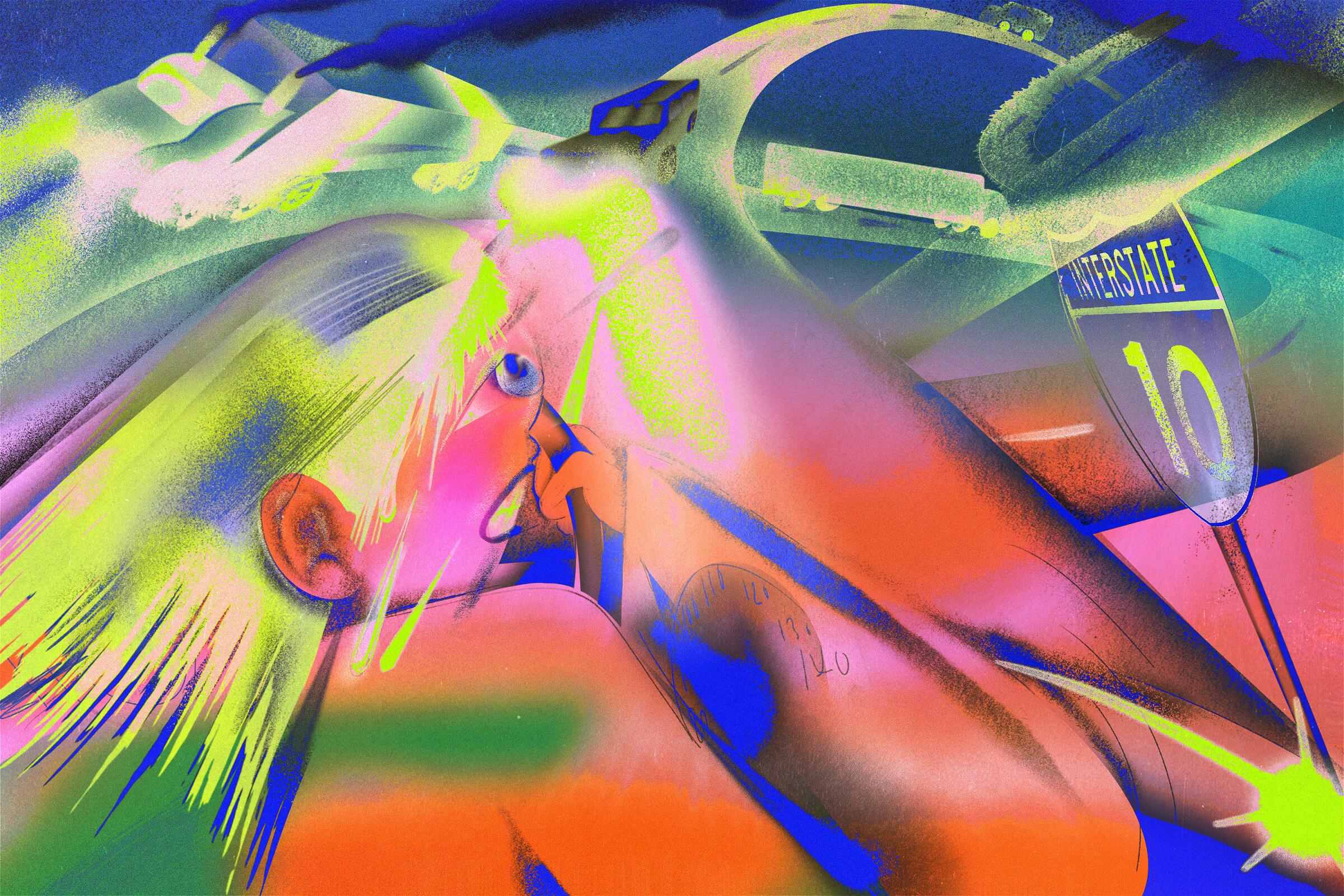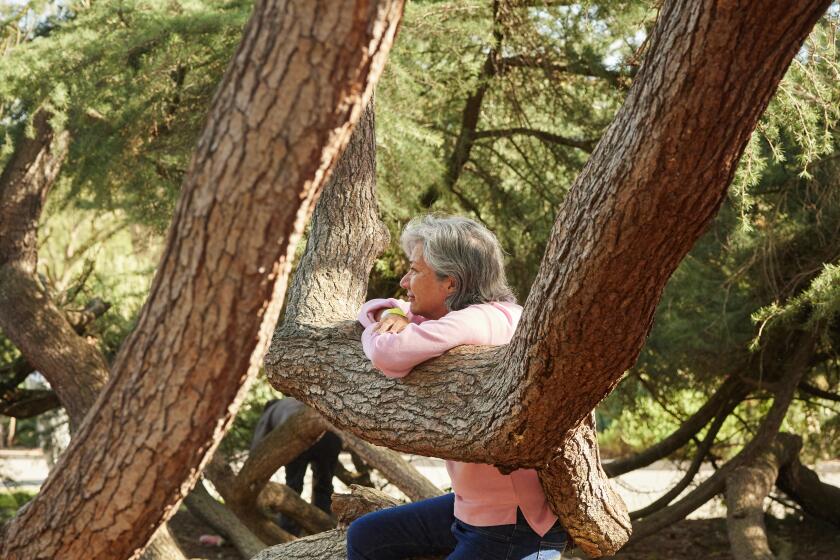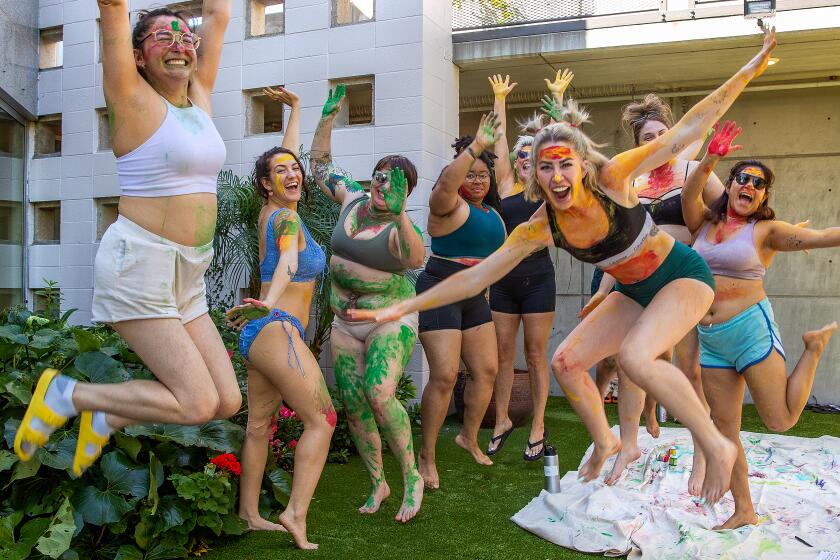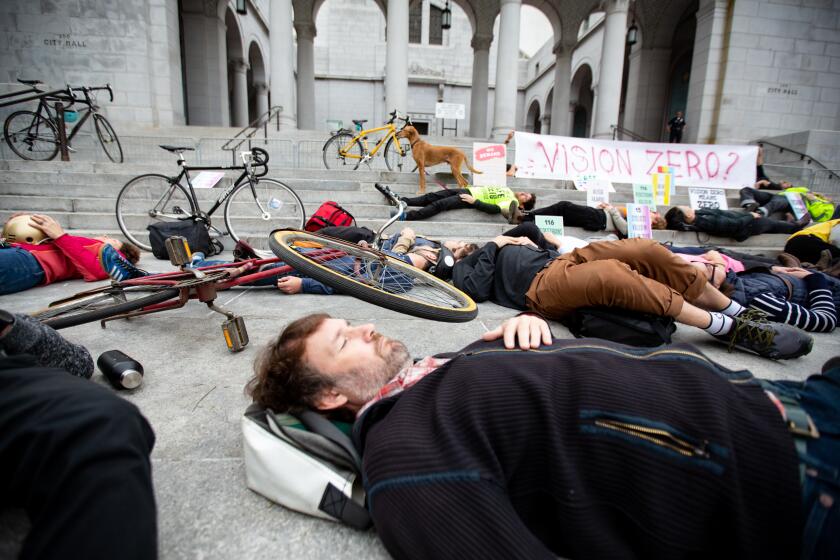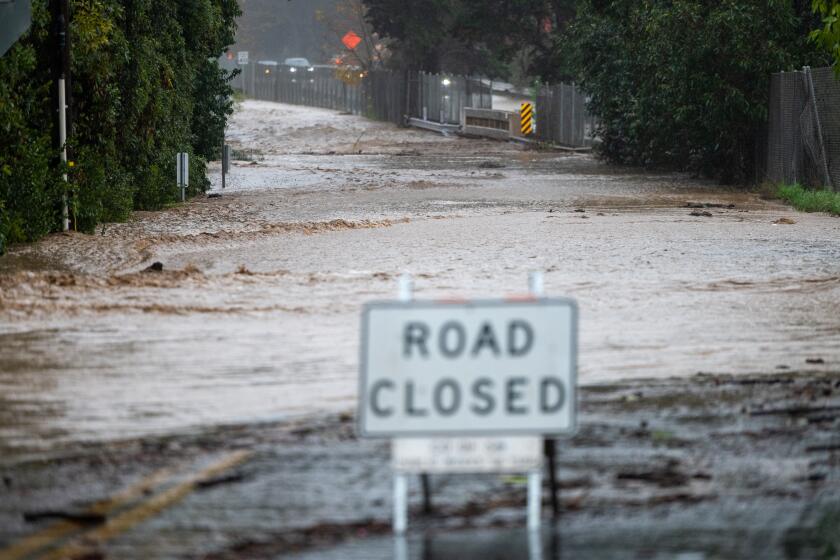My New Year’s resolution this year is simple. This weekend — my first back in L.A. after visiting family for the holidays — I will drive to the 101 freeway entrance by my house and I will … get on it.
Simple as that. But far easier said than done.
I haven’t driven on the freeway in more than two years — I’ve been too afraid. I’ve rarely even ridden as a passenger on the freeway, with someone else behind the wheel, and when I do, I sit on my hands so my fingers won’t tremble.
Fear of driving on the freeway is hardly uncommon — and for good reason. Headlines reporting fatal accidents and police pursuits ending in deadly crashes are more commonplace than ever in L.A.
But here’s the thing: It’s an entirely new phenomenon for me. Living in Los Angeles as a journalist, I’ve fearlessly traversed the city’s vast thicket of freeways for decades. My work took me from the mountains to the desert to the sea. Years ago, I dated someone in San Diego and endured the three-hour drive on the 5 south every other Friday for about a year. And all with relative ease.
So what changed? My brain, basically.
The pandemic was rough, in infinitely varied ways, for everyone. For me, on top of the stresses of the public health crisis and its myriad economic and social repercussions, I experienced a series of losses in succession, sometimes with just weeks between them. And it didn’t let up for about two years. My grief manifested on the freeway, where I’d have small, then more pronounced, panic attacks — something totally new to me.
Here’s what happened: In early 2020, a sibling of mine tragically died. Later that year, my partner and I broke up. We’d been together for several years and it was a significant loss. This was in the early days of the pandemic, when many of us were wiping down our groceries and staying inside for days on end. I was doing that too, but now alone in my apartment.
I don’t have children but my cats provided comfort during that period. (For some of us, our pets are our kids.) Then they both died too, one after the other — unexpectedly. The first, only 8 years old, suffered a violent and painful death. My second cat, much older and more fragile, witnessed it and became so anxious afterward that she got sick and passed away only months later.
The silence in my home, after that, was unsettling: no scritch-scratching of claws on hardwood floors or chomping of kibble in the background as I pecked away at my keyboard writing articles. I’d sip coffee in the mornings, taking some comfort in the lush view of the greenery on my deck. Until nearly all the plants died in a heatwave.
Then my parked car was smashed during a hit-and-run. Insurance paid to fix it. But then the car was targeted by catalytic converter thieves. Again, insurance covered the repairs. But when, several months later, the thieves struck again, my insurance company declared the 14-year-old Honda a total loss.
When the tow truck came to haul my car away, I fell into the driver’s burly arms and cried. I’d had that trusty, beat-up Honda longer than any romantic relationship, and at that moment, it felt like all I had left.
Given this sustained succession of emotional gut punches, my central nervous system was on high alert. A car door would slam outside and I’d jump, my body bracing tensely: “What next?”
That feeling manifested — exaggeratedly so — driving on the freeway. I held it together in all areas of my life, but the freeway became a release valve for my pent-up grief. Instead of seeing the big picture while driving, getting into the flow of traffic, I saw too much detail. The freeway was a dangerous, kinetic collage of spinning wheels and whirling, sparking hubcaps and rectangular hunks of metal flying forward, any piece of which, at any instant, could crash into me. It was like at the start of a billiard game, when the cue breaks the racked balls with a fiery crack, sending the multicolored striped and solid orbs flying in all directions. That’s how I saw traffic. Panic.
The freeway was a dangerous, kinetic collage of spinning wheels and whirling, sparking hubcaps.
The lane I was driving in felt constricting and narrow; trucks on either side of me felt hulking and ominous. My jaw clenched, my breath quickened, my teeth chattered. And my heart pounded in my chest.
It wasn’t a choice so much as survival — I could not drive, safely, on the freeway anymore. I made adjustments, slipping like water around rocks. I changed my Waze settings to “avoid freeways” and took surface streets everywhere instead. I took Ubers or carpooled with friends if the drive was too long on surface streets. If headed especially far, I took a train.
I should add that I don’t particularly like to drive. Nor would anyone close to me say I’m good at it. Before L.A., I’d only lived in walkable cities with active public transportation systems: Philadelphia, San Francisco, Tokyo, Boston. But I certainly never feared driving.
And for those who have always feared freeway driving, it’s understandable. Traffic-related deaths in Los Angeles have been on the rise in recent years, at their highest point in two decades. In 2022, 312 people died in traffic accidents, according to the Los Angeles Police Department’s most recent data. That’s a 5% jump from 2021 and a 29% jump from 2020.
Perhaps the most disconcerting part was that my newfound freeway phobia sparked something of an identity crisis: I am not a fragile or fearful person. I take risks, I speak up for myself, I have a sense of agency. I don’t recognize this new, tentative version of myself. I’m confused by her, ashamed. Who is she? How do I get back to the self I identify with? Does she even still exist?
I’ve since healed from those aforementioned losses and am feeling infinitely revived in my personal life. New cats, new boyfriend, new car. But, oddly, the freeway fear has stuck.
“It’s such a normal human impulse when you’ve gone through tragedy and loss,” says L.A. author and psychotherapist Claire Bidwell Smith. “You’re seeing the world through a lens where the unexpected looms around every corner and something catastrophic can happen at any moment. Your life was going along and then: Bam! Bam! Bam! You’re scrambling to hold onto something, so you hold onto ‘How can I predict this, control it in some way?’ But we can’t control the world in the way we would like to, so we get stuck in this catastrophic place.”
Panic attacks in cars are especially common, Bidwell Smith adds. Her theory? “The car is a space where you’re often alone, a quiet private space, and all these thoughts, some of the stuff we’ve been pushing away, start to gurgle up.”
I haven’t talked openly about my freeway phobia much, not even to family. Until recently — and nearly everyone I’ve spoken to about it had experienced something similar or knew someone who had. I was at dinner recently with two journalist friends. One of them said she developed flying anxiety after her father died, something that dissipated over time. The other said her sister in Toronto developed a fear of driving on the freeway after their father died — she still hasn’t gotten over it.
Bidwell Smith says that after her own parents died, she developed a fear of flying and became fixated on her health. A client developed a fear of riding on elevators after his wife died.
How many more people are there like us in L.A.?
“It’s very common,” says Sarah Caliboso-Soto, director of the Telebehavioral Health Clinic at USC’s School of Social Work, which provides counseling for driving anxiety among other mental health issues. “Grief itself can be a very traumatic experience, and when people are driving, in particular, their senses are more heightened. And you can experience anxieties as a result.”
My period of avoiding freeways wasn’t all bad. I traversed neighborhoods I’d never otherwise pass through in L.A., gaining a better understanding of how the city connects. I got lost plenty, on zigzaggy Waze routes, but that had its upsides too. I stumbled on a collection of street murals, on remote side streets, in the downtown L.A. warehouse district. I found an available apartment for rent, for a friend, in Jefferson Park, a gem of a neighborhood filled with old Craftsman homes. I stopped several times for roadside fruit at different points around the city, wolfing down chili-spiked mango, drenched in lime juice, from behind the wheel.
But I long for my freedom again, to be unhindered by an emotional impediment. I miss the person I once was and ache to embody her again. It may not happen all at once; likely it will be a slow process, one freeway ramp at a time.
